After you create a team build containing your TestComplete tests, you can assign that build to a test plan.
Requirements
You must have access to your team project’s test plans:
-
To access and manage test plans from Microsoft Test Manager, you must have one of the following Microsoft Visual Studio versions with Microsoft Test Manager installed:
-
Microsoft Visual Studio 2015–2019 (the Enterprise or Test Professional edition).
-
Microsoft Visual Studio 2010–2013 (the Ultimate or Premium edition).
-
-
To access a test plan by using your team project’s Web Portal:
-
Important: You must have the Microsoft Test Manager extension installed on your Azure DevOps Server or Team Foundation Server, or for your Azure account.
-
Access your project directly from your web browser:
-
For Azure DevOps Services (formerly known as Visual Studio Team Services or VSTS):
https://dev.azure.com/<Your_Azure_Account_Name>/<Project_Name>– or –
https://<Your_VSO_Account_Name>.visualstudio.com/<Project_Name>(if your organization has not moved to thedev.azure.comdomain yet) -
For On-Premises Azure DevOps Server and Team Foundation Server:
http://<Your_Server_Name>:8080/tfs/<Collection_Name>/<Project_Name>
You can find information on Web Portal at docs.microsoft.com/en-us/azure/devops/project/navigation/.
-
-
Prerequisites
 For Azure DevOps Services, Azure DevOps Server 2019 and Team Foundation Server 2018.
For Azure DevOps Services, Azure DevOps Server 2019 and Team Foundation Server 2018.
To run TestComplete tests as part of a test plan from the Web Portal of your team project, you must have a release pipeline that is based on the Run automated tests from Test Manager template and that uses a build instance that includes your TestComplete test files as an artifact.
Note: If you are going to run your TestComplete tests as part of a test plan from Microsoft Test Manager in lab environments, skip this step.
To create a release pipeline:
-
Open the Web Portal of your team project and navigate to the Pipelines > Releases page:
-
Click New > New release pipeline. In the resulting Select a template wizard, select the Run automated tests from Test Manager template and click Apply:
-
Add the artifact that includes the results of your build created on step Create a Build Containing TestComplete Tests to the pipeline:
-
By default, the created pipeline includes a single stage that has one task: Visual Studio Test.
-
Make sure the task will run on the proper agent that meets all the needed requirements:
-
If you have a Visual Studio Test task, make sure that:
-
The Select tests using setting is set to Test Run.
-
The Search folder setting contains the path to the folder where your TestComplete test items (.tc12test files) reside.
-
-
Save the pipeline.
Create and Configure a Test Plan
From the Web Portal
 You must either have the Enterprise account type or the Microsoft Test Manager extension must be installed.
You must either have the Enterprise account type or the Microsoft Test Manager extension must be installed.
-
Open the Web Portal of your team project.
-
Navigate to the Test Plans page of your project:
-
Select the needed test plan or click New Test Plan to create a new one.
-
Configure your test plan settings:
-
In the Build drop-down list, select the build that includes your TestComplete tests.
-
In the Release definition drop-down list, select a release configured to run your TestComplete tests.
-
In the Environment drop-down list, select the stage of the release that runs your TestComplete tests.
-
-
Save the changes.
-
Select your test plan or the test suite to which you want to add a test case with associated TestComplete tests. To learn how to associate TestComplete tests with test cases, see 3. Associate a Test Project With a Test Case (Run TestComplete Tests as Part of a Test Plan).
-
Click Add existing. In the resulting dialog, find the needed test case and click Add.
From Microsoft Test Manager
-
Launch Microsoft Test Manager and connect to your team project.
-
Go to the Testing Center and select the needed test plan. If you do not have a test plan, create it:
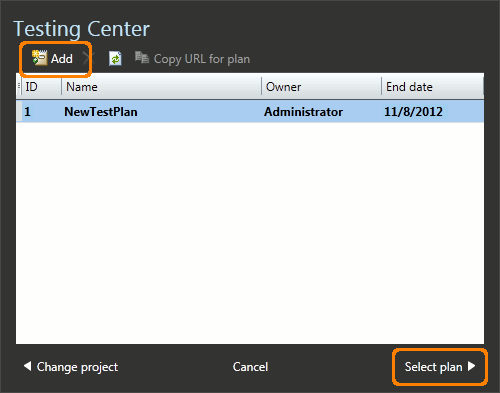
-
Open the Properties page of your test plan:
-
In the Filter for builds drop-down list, select the needed build definition.
In Build in use, click Modify and select the build you want to use for testing:

-
If you run tests in a lab environment, in the Test settings drop-down list, select the appropriate test settings.
Note: You can run automated tests in lab environments only if you use XAML builds. In the Test environment drop-down list, select the lab environment where you want to run TestComplete tests.

-
Save the changes.
-
Select your test plan or a test suite to which you want to add a test case with TestComplete tests associated. To learn how to associate TestComplete tests with test cases, see 3. Associate a Test Project With a Test Case (Run TestComplete Tests as Part of a Test Plan).
-
Click Add. In the resulting dialog, find the needed test case and click Add test case:
See Also
Run TestComplete Tests as Part of a Test Plan
Creating a Build Containing TestComplete Tests
Running Test Cases with Associated TestComplete Tests

 Requirements
Requirements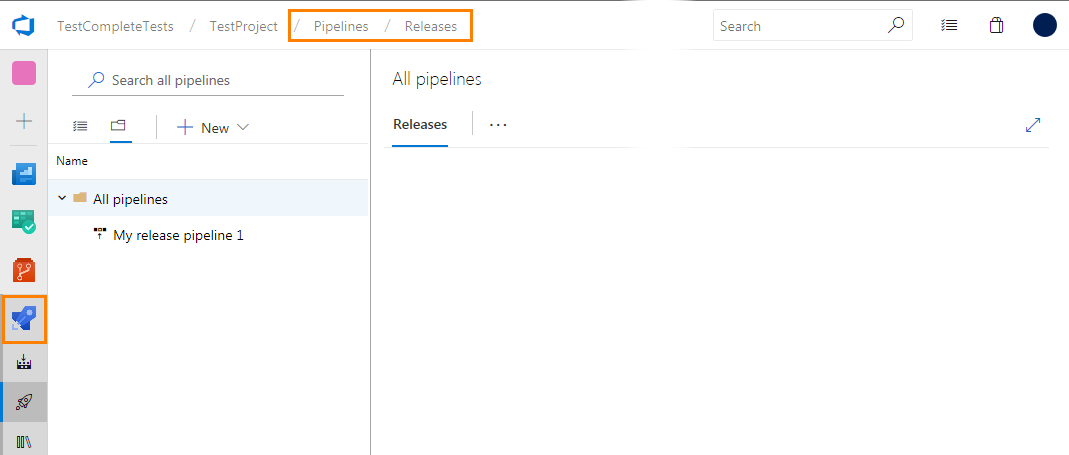
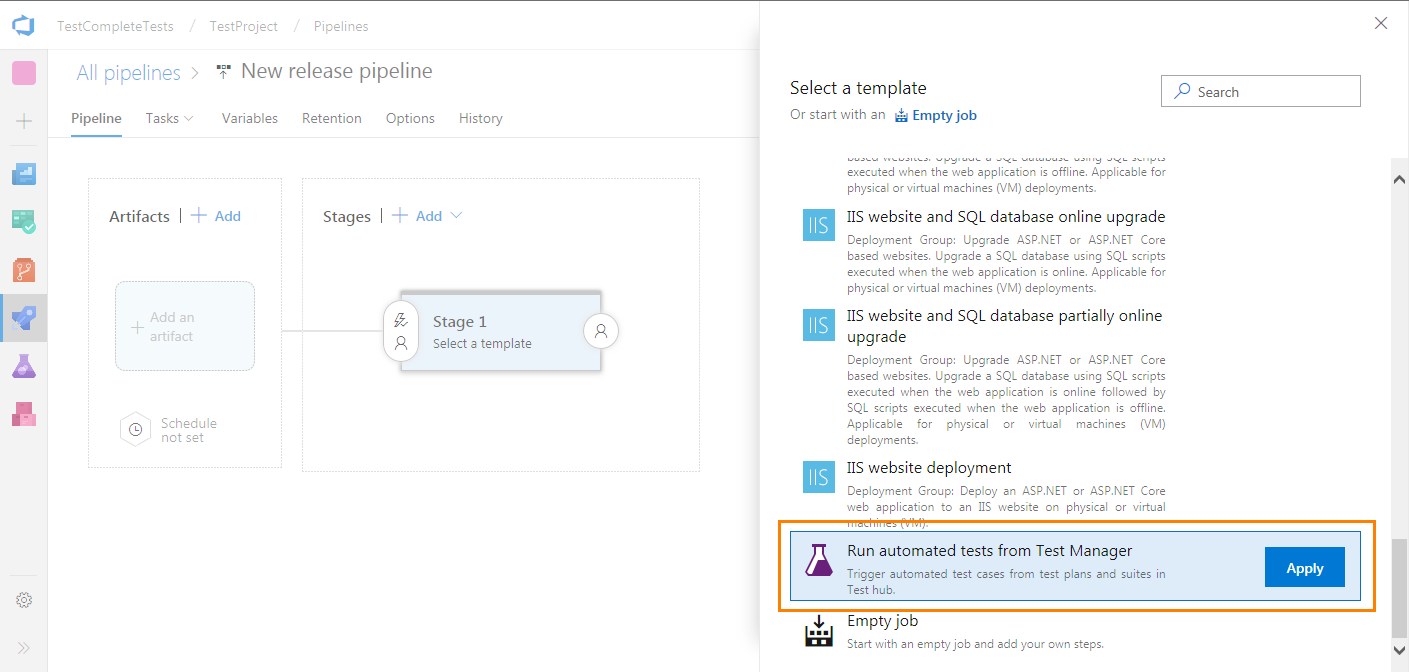
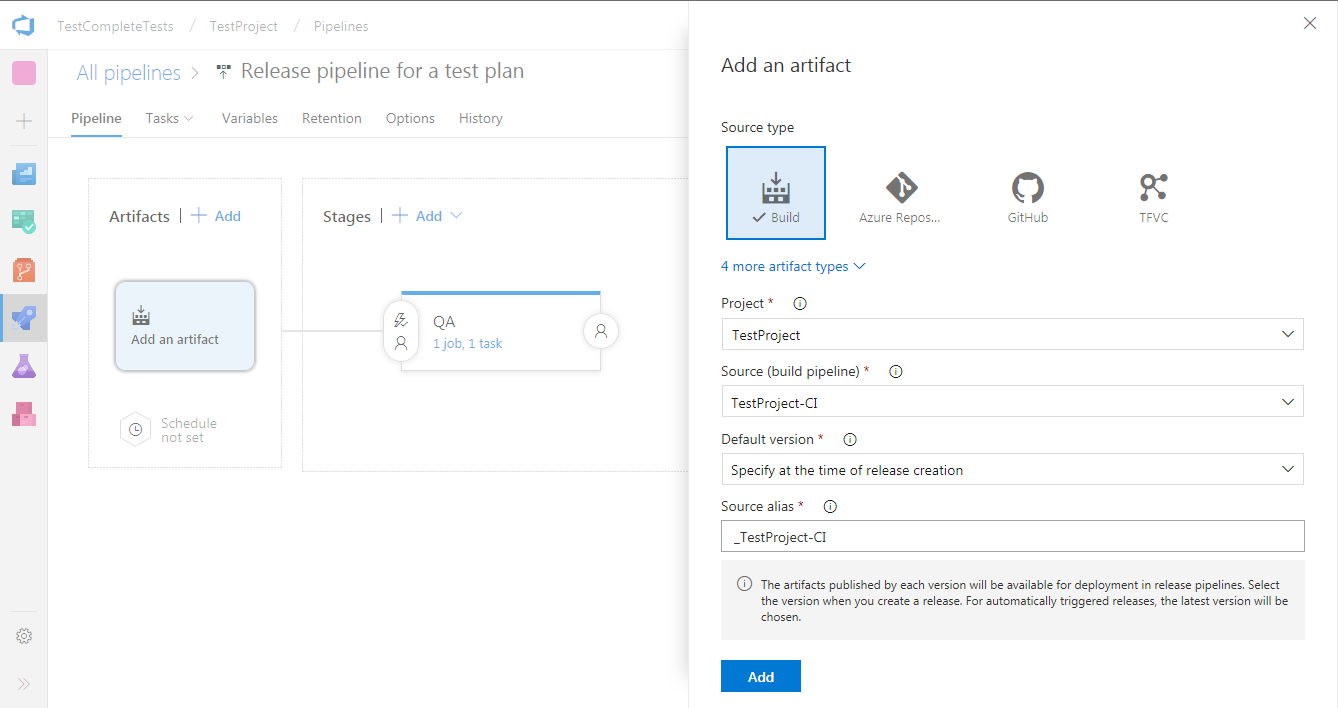
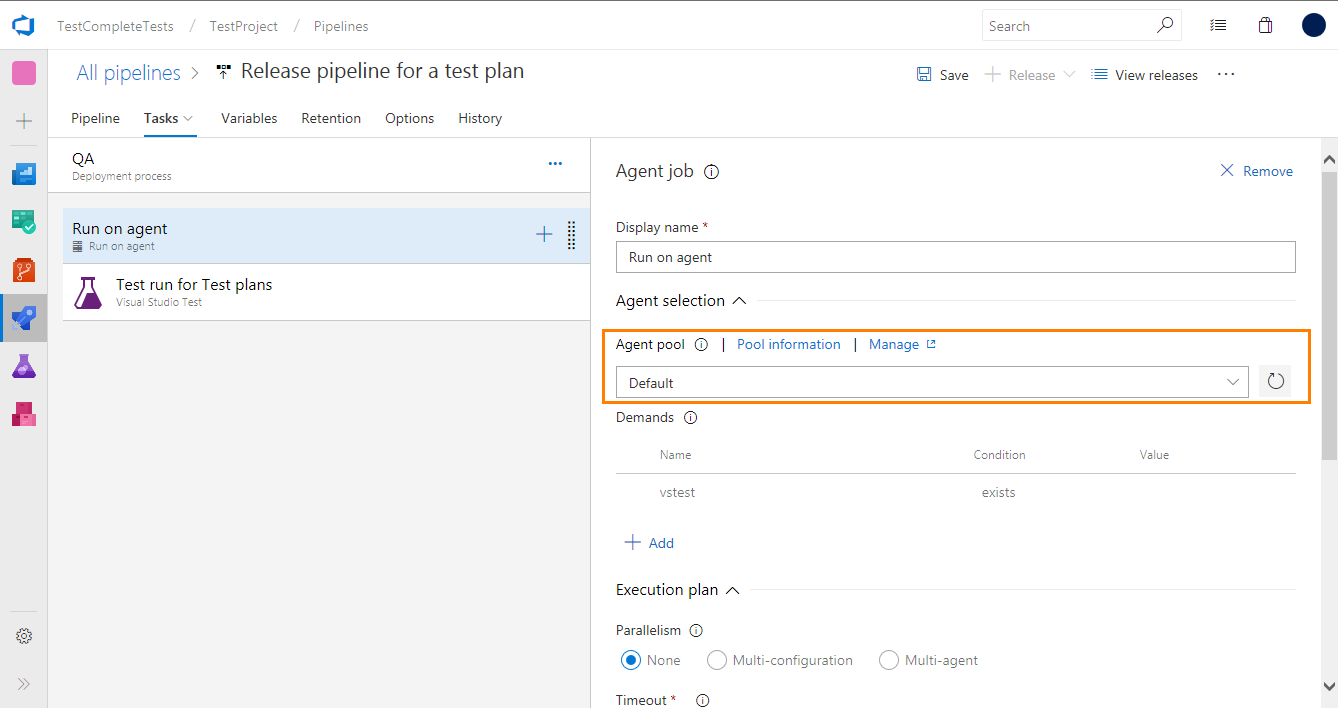
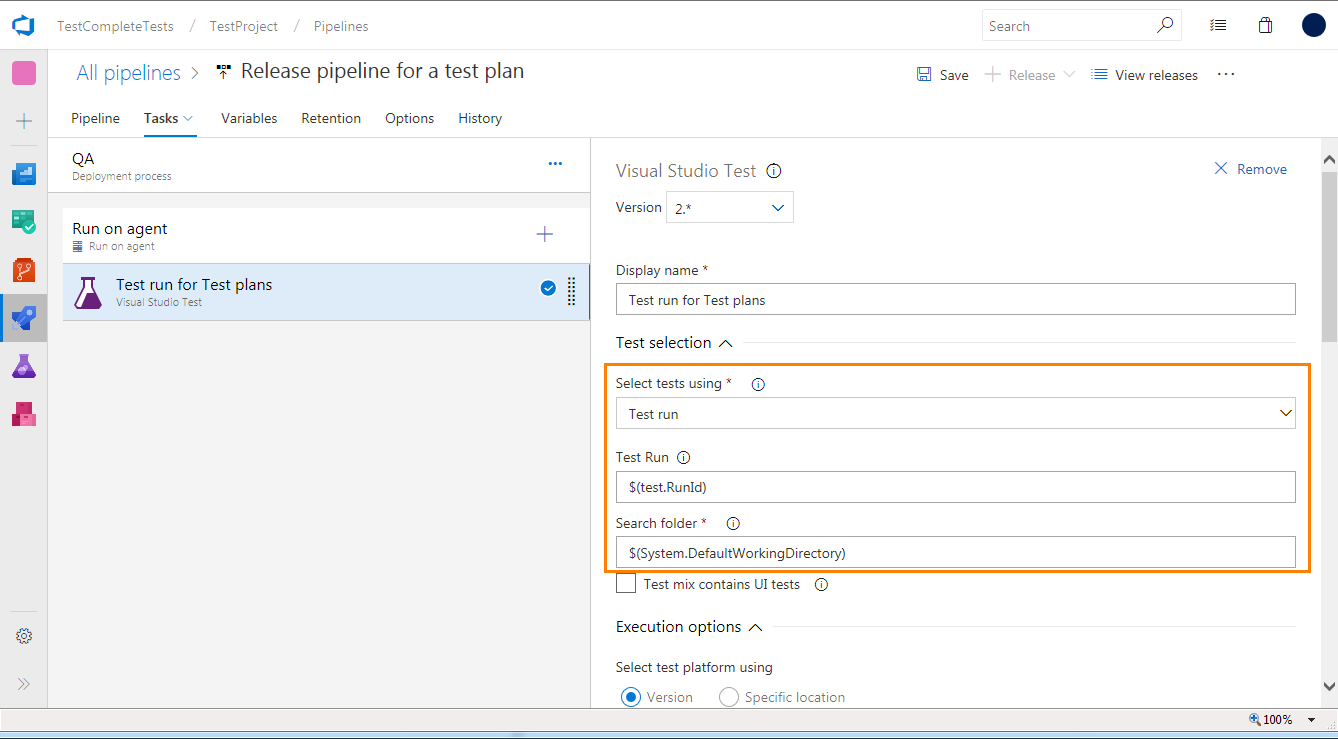


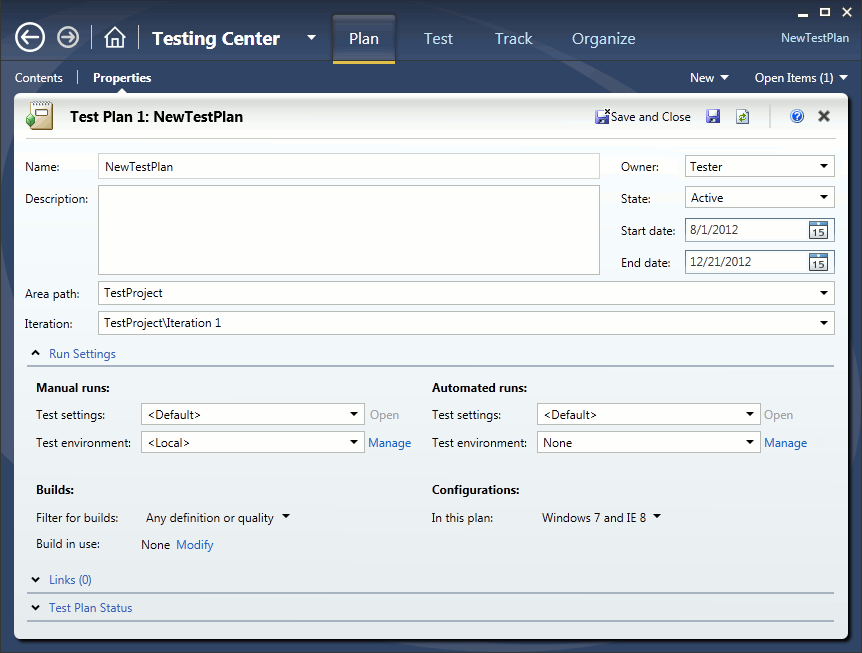
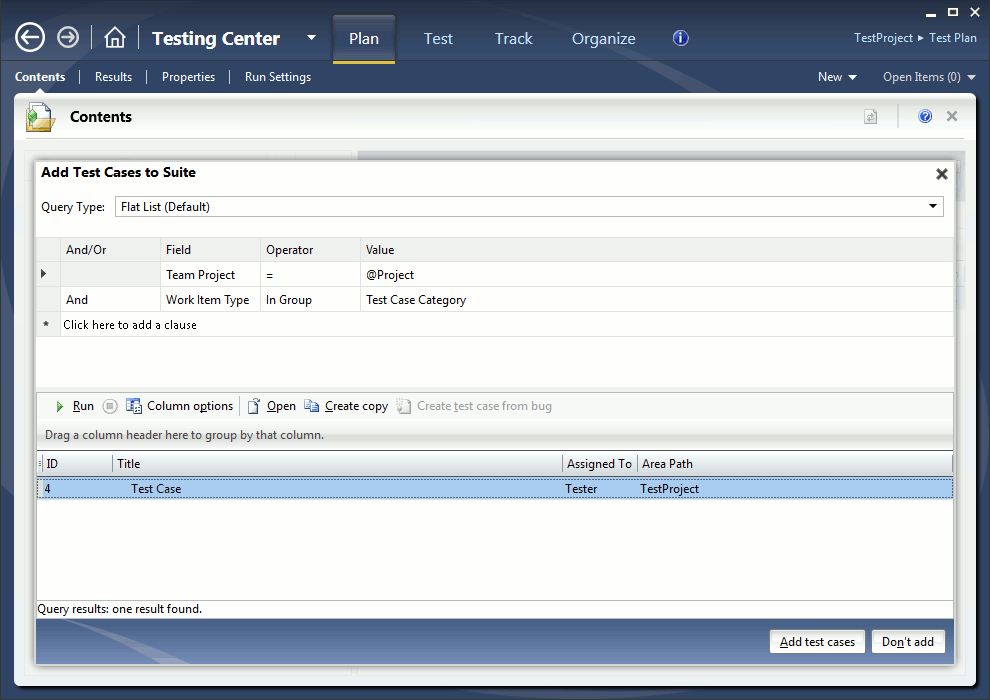
 Prev
Prev